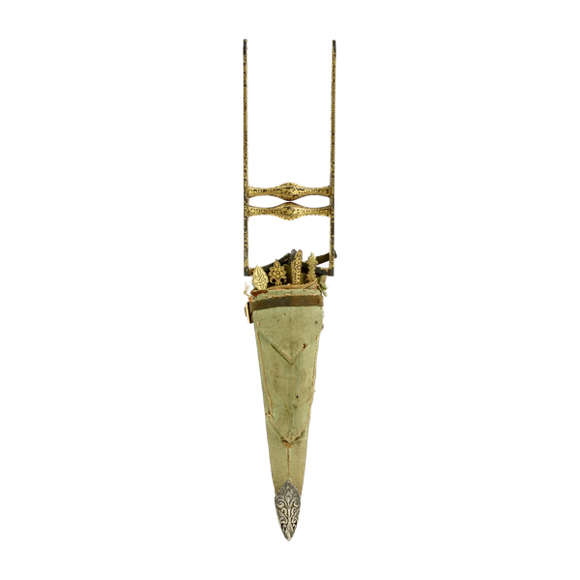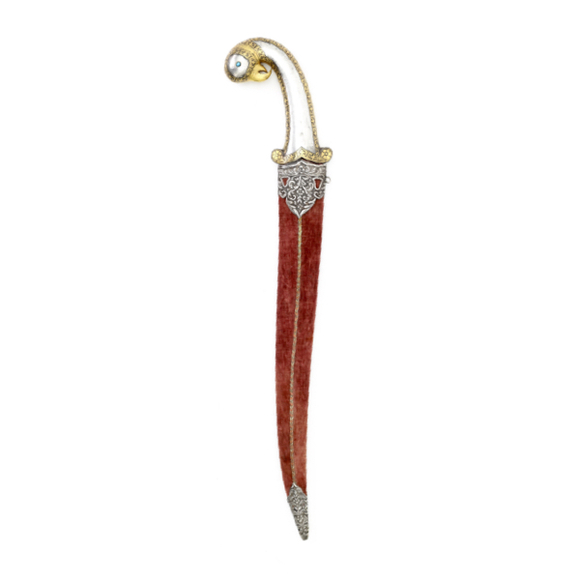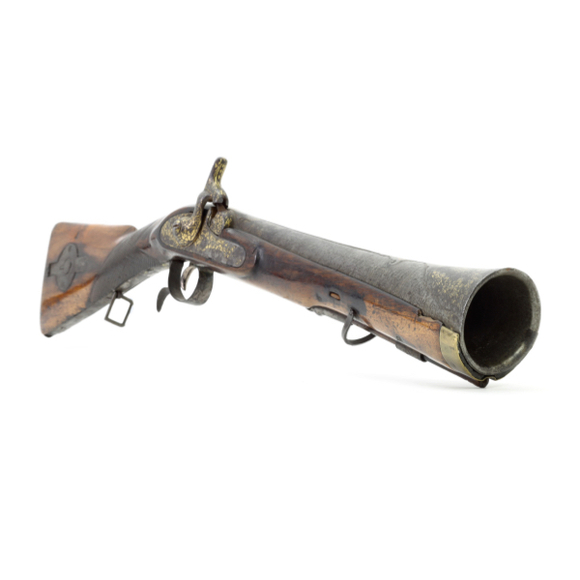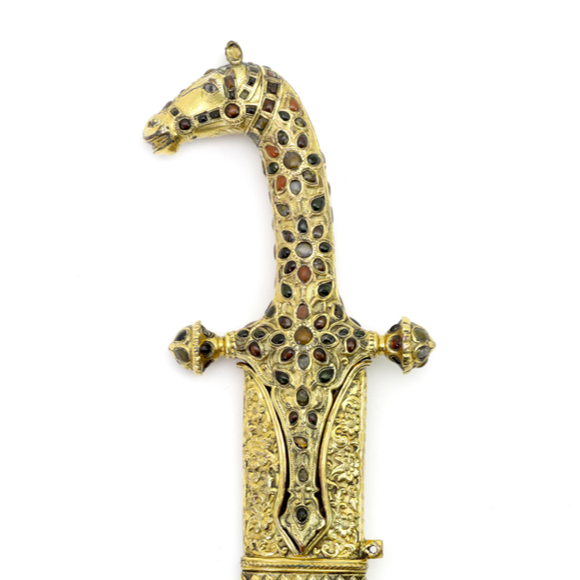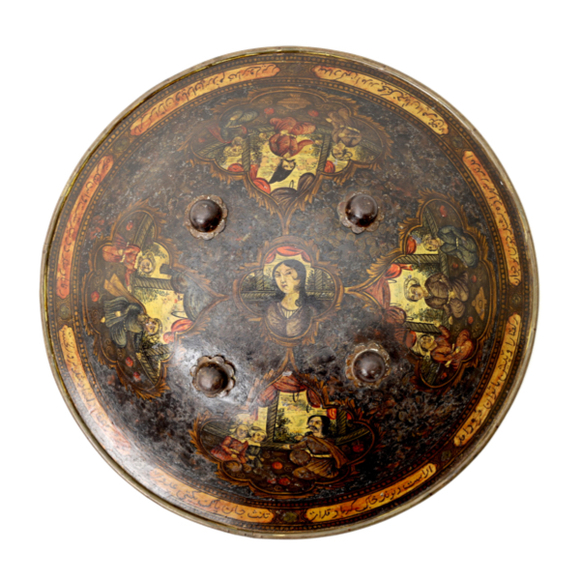With a fine wootz blade with a pronounced center ridge.

90.6 cm
Tip to crossguard 79.8 cm
Over spine 80.7 cm
Base 31 mm
Middle 26 mm
5 cm from tip 12 mm
Base 4.5 mm
Middle 3 mm
5 cm from tip 2.5 mm
690 grams
14 cm from center crossguard
Wootz steel, iron, gold, pitch/resin
Blade; Persia
Hilt; Lahore
Circa 1750-1800
Introduction
Persian culture had a profound influence on surrounding cultures, including that of north India to its east and as far west as the Ottoman empire. Persian steel in particular was prized. Wootz steel, a fine and prized type of crucible steel that exhibits fine patterns, was originally invented in south India but the material was initially mostly prized for its properties, and not for its appearance. So wootz swords in India were often just polished bright, the pattern not visible to the naked eye. It was the Persians that developed a high degree of appreciation of the aesthetics of wootz steel, and who started to make beautiful high-contrast wootz that readily showed off its pattern. This type of wootz was called kara khorasan or "brilliant black" and became a very popular import into north India, in particular in the Punjab and Rajasthan. Trade consisted either of billets that were worked into typical Indian forms of weapons like katar or talwar, or in the form of complete blades that were provided with Indian hilts.
This example
Here is an example of a Persian blade, mounted in an Indian talwar hilt. The blade made of fine Persian kara khorasan wootz steel, with a bold pattern in high contrast. The pattern seems to fade near the edge, this is the result of differential heat treatment. In the right light, you can see the pattern continuing in the greyish crystalline line of the hardened edge.
The blade shape is purely Persian, of shamshīr (شمشیر) form with a narrow, pointy blade with a very deep curvature. Such blades are incredible close-quarters cutters, and the deep curve helps the pint reach places a normal sword could not. The blade seems welded onto a thicker ricasso and tang, probably to make for a better fit in the talwar hilt.
The iron hilt is of a form that makes it attributable to the Punjab. Characteristics of such hilts of this area are the pronounced fat-bellied vase shape of the grip section, and the slightly forward angle of the quillons.1 It has an additional knuckle guard that ends in a flower bud.
It is decorated entirely with golden overlay (koftgari) in the form of hanging branches with leaves, resembling that of a willow. This kind of decor can also be attributed to Punjab, and in particular Lahore.2

Comparison. Top, a matchlock musket that we sold earlier, probably from the Sikh armory in Lahore.
Bottom, the hilt of this talwar hilted shamshir exhibiting identical decor.
Marking
The hilt is marked with a number. Two zeros can easily be identified. The first lightning bolt-shaped character is probably shorthand for one of the other numbers. It does resemble the old Brahmi number 8, although that's perhaps a bit archaic.

Condition
As a practical item that has been around for a while, there is the usual wear and tear on the gold on the hilt. Blade in pretty good shape, only one minor spot of edge damage and some isolated patches of corrosion. Could benefit from a polish by Philip Tom to bring out its full beauty.
Conclusion
A talwar hilted shamshir of the 18th century from the Punjab area, most likely Lahore, with a prized imported Persian wootz blade. The style of decor of the hilt is nearly identical to a gun we sold previously, which is part of a group of weapons believed to be from Lahore, then the seat of power of Ranjit Singh's Sikh Empire.
Notes
1. See Thomas Holbein Hendley; Damascening on steel or iron, as practised in India. W Griggs & Sons. London. 1892. Plate 3a.
2. See a number of 18th century Sikh guns from Lahore, described in Robert Elgood: Firearms of the Islamic World in the Tareq Museum, Kuwait. I.B. Tauris Publishers. London / New York, 1995. Pages 152-153 and 174-175. Also see a similar gun I sold in 2017: An Indian matchlock musket.




















The style typical of Kutch, the execution far above what is normally seen on work from that area.

